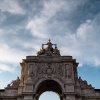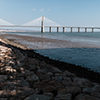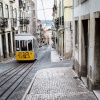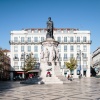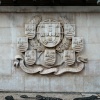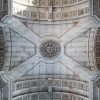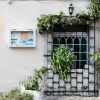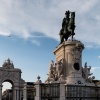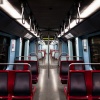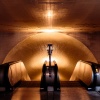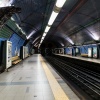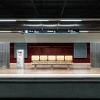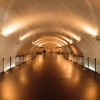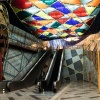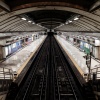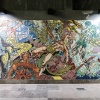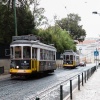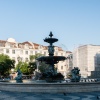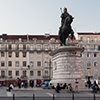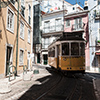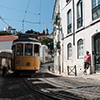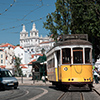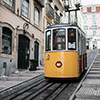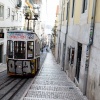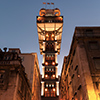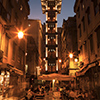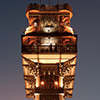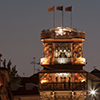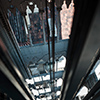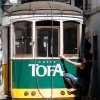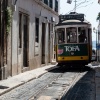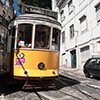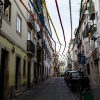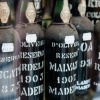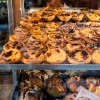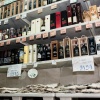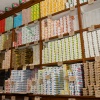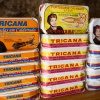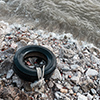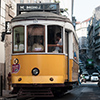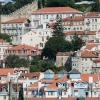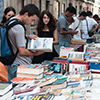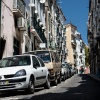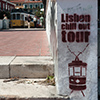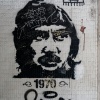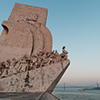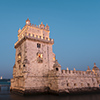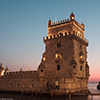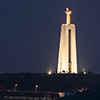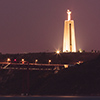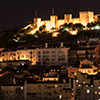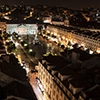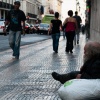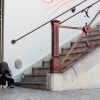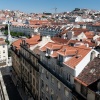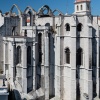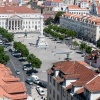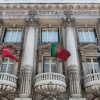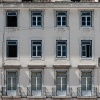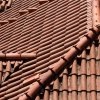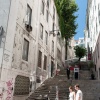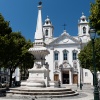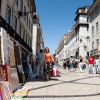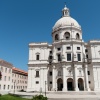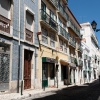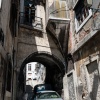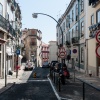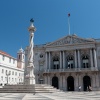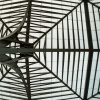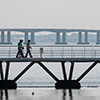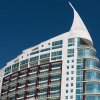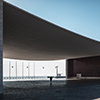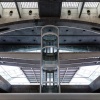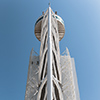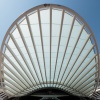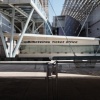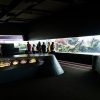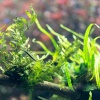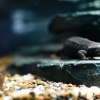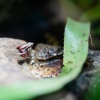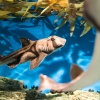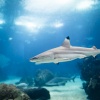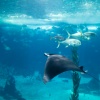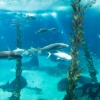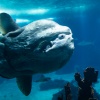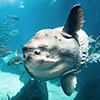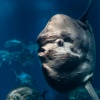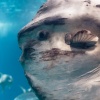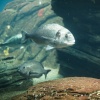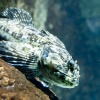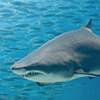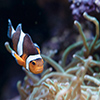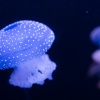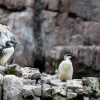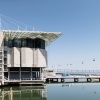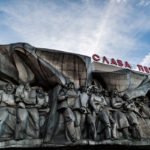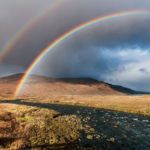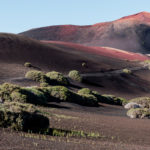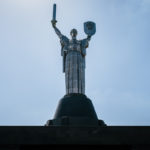Lisbon – Tramways and Seafood
To document the network of the Metropolitano de Lisboa as a part of my photo project I made it back to the capital of Portugal. Funnily enough I booked the flight exactly for the same weekend of September like I did 8 years ago, when I put my feet in Lisbon ground for the first time. Eight years is a good period allowing to compare things and recognise developments as well as changes. The gem at the banks of Tajo River is still a jewel that’s captivating its visitors with a very own charm, a mix of old and new, with historic tramways, a lovely old town as well as stunning modern architecture at Parque das Nações, that is home of worldwide unique Oceanario aquarium.
Making a photographic stop at all stations of the four impressive Lisbon metro lines creating the network of Portugal’s only subway was quickly done and pretty much refreshing after the desert of the uniform metro station of Madrid. Lisbon’s underground is often an optical delight and gives evidence that side platforms can be a visual enjoyment. To get access to most means of public transportation you need a Viva Viagem card that you charge with the ticket of your choice at one of the many vending machines around.
With that card you can also use the picturesque tramways. One of them is Eléctrico 28, that’s driving through Lisbon on an east-west route. Along its way visitors get to see Lisbon in a nutshell, an excerpt of the Portuguese capital. When leaving the #28 at Praça do Comércio or the metro at Rossio station one of Lisbon’s most impressive highlights can be seen already peeping through the roofs of Baixa district: the Elevador de Santa Justa lift.
Lisbon is located right at the coast but since it’s built on several hills, like Rome, elevadores are needed to make people cope easily with slopes and hills. Elevadores are funiculars or large passenger lifts that connect lower parts of the city with superior districts, like Baixa with Chiado. A student of famous Gustave Eiffel designed the impressive Elevador de Santa Justa, which is under renovation at the moment (2015).
Travessas are what the locals call the narrow lanes at Chiado district. In the evening that place is buzzing like hell as an army of cute little restaurant and bars tries to hook visitors to sit down. And if you don’t bump into one of the pests of modern era, that is the binge drinking noisy bunch of a pub crawl, then you can have a splendid time with Vinho Verde, best fish and seafood along with conversation and background music.
In contrast to Brazil, where a spoken word of Spanish leads to frozen emotions and unwillingness to help, speaking Spanish in Lisboa is not a problem at all as Portugal’s capital bids its visitors a warm welcome.
Even people speaking English only won’t have a problem at all. With those possibilities you can sit down at the banks of Tajo River, have a chat with the locals while watching the setting sun staging the mighty Ponte 25 de Abril, a huge Golden Gate style bridge spanning the river. Memories of Istanbul in summer come up, also because there is no coherent waterside promenade, unfortunately.
A little bit out of the city, to the west of down town, where Tajo River shakes hands with Atlantic Ocean, picturesque Torre de Belém and Monument to the Discoveries (Padrão dos Descobrimentos) stand guard for all vessels em- and debarking. Latter one is a beautiful homage to daredevils like Vasco da Gama oder Bartolomeu Dias, whose nautical abilities as well as discoveries can be found literally everywhere in the city, for example a more recent mosaic at Oriente subway station.
Lisbon is not a fairy-tale town though as also contrasts meet each other. Only few metres away from stores selling 620 Euro wines and suits made of finest Vitale Barberis Canonico fabric plenty of dodgy people gather around the mass of tourists. It is absolutely no problem to buy drugs in broad daylight as dealers approach people aggressively with their offer… Also I’ve seen a couple of diversionary tactics to steal wallets or get access to handbags & co. That’s been the same in 2015 like back in 2007, unfortunately.
One of the coolest places in town, maybe even in whole Portugal, is the worldwide unique aquarium Oceanario, where visitors can see a boast of species, even exotic ones like an exclusive sunfish that’s phlegmatically swimming its rounds. It is absolutely no problem to spend half a day or more while watching Nemos (anemone fish) and sea horses, penguins and stingrays.
Meanwhile a second show area got finished to provide space for temporary exhibitions. In my case I had the opportunity to watch the installation “underwater forests” (or “florestas submersas”) designed by Japanese photographer Takashi Amano. Since I have an eye for plastics and I couldn’t spot it back in 2007 I presume that many real plants like kelp got replaced by synthetic imitations.
In the course of time the aquarium became a touristic epicentre and attracts several millions of visitors per year. Its surrounding is the former EXPO area, where notorious and much discussed Treaty of Lisbon got decided. Meanwhile there are a couple of good restaurants around providing seats at the banks of Tajo River as well as the view of tremendously looooong Ponte Vasco da Gama, with a length of ~17,2 kilometres being one of the longest bridges in the world.
Modern architecture is often about functionality, embodied by using glass and steel. Often that kills the architectonical soul and the character of urban buildings. At Park of Nations (Parque das Nações) things are different though, luckily, as even the naked concrete of Oriente train station meets and fits the overall image of Moscavide district, where star architect Santiago Calatrava could let off his creative steam and love for maritime subjects. One of the most impressive installations is the scallop shell-like eastern roof of Oriente train station, hovering above the forecourt like a giant sail.
Further highlights like Jerónimos Monastery, Palácio de São Bento as well as the Jesus statue Cristo Rei and Castelo de São Jorge finalise the recipe for a future return, for my third visit. This article contains photos shot in September 2007 as well as September 2015.
